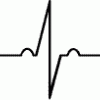Amelioration of cognitive deficits mediated by sunifiram was associated with stimulation of glycine-binding site of NMDAR [2012]
"Amelioration of cognitive deficits mediated by sunifiram was associated with stimulation of [the] glycine-binding site of NMDAR"
"In conclusion, the present study demonstrated that sunifiram ameliorates cognitive deficits in OBX mice and it enhances LTP induction via a glycine-binding site of NMDAR activity."
And the application to schizophrenia:
Novel Therapeutics for Schizophrenia: Targeting Glycine Modulation of NMDA Glutamate Receptors
Stephen M. Stahl, MD, PhD
CNS Spectr. 2007;12(6):423-427
Faculty Affiliation and Disclosures
Dr. Stahl is adjunct professor of psychiatry in the Department of Psychiatry at the University of California-San Diego in La Jolla.
Disclosures: Dr. Stahl receives grant/research support from AstraZeneca, Biovail, Bristol-Myers Squibb, Cephalon, Cyberonics, Eli Lilly, Forest, GlaxoSmithKline, Janssen, Neurocrine Bioscience, Organon, Pfizer, Sepracor, Shire, Somaxon, and Wyeth; is a consultant to Acadia, Amylin, Asahi, AstraZeneca, Biolaunch, Biovail, Boehringer-Ingelheim, Bristol-Myers Squibb, Cephalon, CSC Pharma, Cyberonics, Cypress Bioscience, Eli Lilly, Epix, Fabre Kramer, Forest, GlaxoSmithKline, Jazz, Neurocrine Bioscience, Neuromolecular, Neuronetics, Nova Del Pharma, Novartis, Organon, Otsuka, PamLab, Pfizer, Pierre Fabre, Sanfoi Synthelabo, Schering Plough, Sepracor, Shire, Solvay, Somaxon, Takeda, Tetragenix, and Wyeth; and is on the speaker’s bureau of Pfizer.
If you would like to comment on this column or submit a suggestion to Dr. Stahl for future columns, please e-mail vj@mblcommunications.com.
New Trend in Psychopharmacology
Currently, a major hypothesis for the pathophysiology of schizophrenia1-10 proposes that numerous risk factors converge on the N-methyl-D-aspartate (NMDA) receptor for the neurotransmitter glutamate, resulting in neurodevelopmental abnormalities at glutamate synapses and hypofunction of NMDA receptors. This hypothesis was presented in a previous “Trends in Psychopharmacology” column.9 Novel treatments are now in development that can theoretically boost the function of NMDA receptors by enhancing actions at the glycine co-transmitter site of this receptor complex.10-20 Early studies15-20 already indicate that this may lead to improvement in negative and cognitive symptoms of schizophrenia, especially when added as augmenting agents to atypical antipsychotics.
New Treatment Strategies for Schizophrenia
The NMDA receptor hypofunction hypothesis for schizophrenia1-5 arises from observations that the NMDA receptor antagonist phencyclidine can produce a psychotic condition similar to the positive, negative, and cognitive symptoms of schizophrenia. These observations, coupled with genetic studies in schizophrenia that also implicate dysfunctional NMDA receptors,6 have led to a new strategy for the treatment of schizophrenia, namely targeting mechanisms that enhance deficient NMDA receptor functioning.3,10-20
Pharmacologic approaches that involve direct enhancement of glutamate risk excitotoxicity from excessive glutamate action.3-5,10 Thus, a potentially safer way to enhance glutamate is to exploit the fact that NMDA glutamate receptors also require glycine actions at a co-transmitter site.3,10-20 NMDA receptors are an interesting type of “coincidence detector” that can open to allow calcium into the neuron to trigger postsynaptic actions from glutamate neurotransmission only when three things occur at the same time: glutamate occupies its binding site on the NMDA receptor, glycine or D-serine binds to its site on the NMDA receptor, and depolarization occurs.3,7,8,10
In order to understand the actions of new drugs directed at the glycine co-transmitter site on NMDA receptors, it is useful to review the synthesis of endogeneous agonists for this site, including glycine and D-serine.
Synthesis of Glutamate Co-transmitter Glycine
Glycine is not known to be synthesized by glutamate neurons, so glutamate neurons must acquire the glycine they need for their NMDA receptors from glycine neurons or from glial cells (Figure 1).3,7,8,10 Glycine neurons release glycine. However, they contribute only a small amount of glycine to glutamate synapses, since glycine is unable to diffuse far from neighboring glycine neurons because the glycine they release is taken back up into those neurons by a type of glycine reuptake pump known as the type-2 glycine transporter (Figure 1).

Thus, neighboring glial cells are thought to be the source of most of the glycine available for glutamate synapses. Glycine itself can be taken up into glial cells either by a type-1 glycine transporter (GLY-T1) or by a glial specific neutral amino acid transporter (Figure 1).10,13-17 Glycine is released into glutamate synapses from glial cells by riding on a reversed GLY-T1 transporter (Figure 1).10 Once outside, glycine can re-enter the glial cell by riding on an inwardly directed GLY-T1, which functions as a reuptake pump and is the main mechanism responsible for terminating the action of synaptic glycine (Figure 1).10
Glycine can also be synthesized from the amino acid L-serine, which is transported into the glial cell by an L-serine transporter, and then converted from L-serine into glycine by the glial enzyme serine hydroxy methyl transferase (Figure 1).10 This enzyme functions in both directions, either converting L-serine into glycine or glycine into L-serine.10
Synthesis of Glutamate Co-transmitter D-serine
D-serine is unusual in that it is a D-amino acid, whereas the 20 known essential amino acids are all L-amino acids, including D-serine’s mirror image amino acid L-serine.3,7,8,10 It just so happens that D-serine has a high affinity for the glycine site on NMDA receptors, and that glial cells are equipped with an enzyme that can convert regular L-serine into the neurotransmitting amino acid D-serine by means of an enzyme that can go back and forth between D- and L-serine (D-serine racemase) (Figure 2). Thus, D-serine can be derived from glycine or from L-serine, both of which can be transported into glial cells by their own transporters, and then glycine converted to L-serine by serine hydroxy methyl transferase, and finally L-serine converted into D-serine by the enzyme D-serine racemase (Figure 2). D-serine’s actions are not only terminated by synaptic reuptake via the inwardly acting glial serine transporter but also by an enzyme D-amino acid oxidase that converts D-serine into hydroxy-pyruvate (Figure 2).

Targeting Glycine Modulation of NMDA Receptors
Glycine Agonists
Agonists at the glycine site of NMDA receptors include the naturally occurring amino acids glycine and D-serine (Figure 3).3,5,7,8,10,15-19 An analogue of D-serine, called D-cycloserine is also active at the glycine co-agonist site of NMDA receptors. All of these agents have been tested in schizophrenia with evidence that they can reduce negative and/or cognitive symptoms.5,7,8,10-19 Further testing of these naturally occurring agents is in progress and synthetic agonists with greater potency are in discovery.

GLY-T1 Inhibitors
The GLY-T1 reuptake pump is the major route of inactivation of synaptic glycine (Figure 1), so it is logical to explore the ability of GLY-T1 inhibitors to enhance synaptic actions of glycine, and, thus, of NMDA receptors (Figure 4).3,5,7,8,10-17,19,20 Several GLY-T1 inhibitors are now in testing, including the natural agent N-methyl-glycine, also known as sarcosine, as well as drugs in preclinical testing, such as SSR 504734, SSR 241586, JNJ17305600, and Org 25935. GLY-T1 inhibitors are analogous to drugs that inhibit reuptake of other neurotransmitters, such as the serotonin selective reuptake inhibitors and their actions at the serotonin transporter. When GLY-T1 pumps are blocked by a GLY-T1 inhibitor, this increases the synaptic availability of glycine, and thus enhances NMDA neurotransmission (Figure 4). Sarcosine has been shown to improve negative, cognitive, and depressive symptoms, including symptoms such as alogia and blunted affect in schizophrenia.19,20 The hope is that GLY-T1 inhibitors with greater potency, such as those in preclinical testing mentioned above, will be even more effective.

Conclusion
An outgrowth of the NMDA receptor hypofunction hypothesis of schizophrenia is the novel therapeutic strategy of enhancing the glycine modulatory component of neurotransmission at these receptors. Already, early testing with direct-acting agonists at the glycine modulatory site, such as D-serine and D-cycloserine, as well as indirect enhancers of synaptic glycine that act by blocking the glycine reuptake transporter or GLY-T1, such as sarcosine, is yielding encouraging results.
References
1. Javitt DC, Zukin SR. Recent advances in the phencyclidine model of schizophrenia. Am J Psychiatry. 1991;148:1301-1308.
2. Jentsch JD, Roth RH. The neuropsychopharmacology of phencyclidine: from NMDA receptor hypofunction to the dopamine hypothesis of schizophrenia. Neuropsychopharmacology. 1999;20:201-225.
3. Stahl SM. Essential Psychopharmacology. 3rd ed. New York, NY: Cambridge University Press. In press.
4. Tamminga CA, Holcomb HH, Gao XM, Lahti AC. Glutamate pharmacology and the treatment of schizophrenia: current status and future directions. Int Clin Psychopharmacol. 1995;3:29-37.
5. Goff DC, Coyle RJ. The emerging role of glutamate in the pathophysiology and treatment of schizophrenia. Am J Psychiatry. 2001;158:1367-1368.
6. Straub RE, Weinberger DR. Schizophrenia genes: from famine to feast. Biol Psychiatry. 2006;60:81-83.
7. Coyle JT, Tsai G, Goff D. Converging evidence of NMDA receptor hypofunction in the pathophysiology of schizophrenia. Ann N Y Acad Sci. 2003;1003;318-327.
8. Coyle JT. Glutamate and schizophrenia: beyond the dopamine hypothesis. Cell Mol Neurobiol. 2006;26:365-384.
9. Stahl SM. Beyond the dopamine hypothesis to the NMDA receptor hypofunction hypothesis of schizophrenia. CNS Spectr. 2007;12:265-268.
10. Millan MJ. N-Methyl-d-aspartate receptors as a target for improved antipsychotic agents: novel insights and clinical perspectives. Psychopharmacology. 2005;179:30-53.
11. Betz H, Gomeza J, Armsen W, Scholze P, Eulenburg V. Glycine transporters: essential regulators of synaptic transmission. Biochem Soc Trans. 2006;34(pt 1):55-58.
12. Long KD, Mastropaolo J, Rosse RB, Manaye KF, Deutsch SI. Modulatory effects of d-serine and sarcosine on NMDA receptor-mediated neurotransmission are apparent after stress in the genetically inbred BALB/c mouse strain. Brain Res Bull. 2006;69:626-630.
13. Harsing LG Jr, Juranyi Z, Gacsalyi Tapolcsanyi P, Czompa A, Matyus P. Glycine transporter type-1 and its inhibitors. Curr Med Chem. 2006;13:1017-1044.
14. Sur C, Kinney GG. The therapeutic potential of glycine transporter-1 inhibitors. Expert Opin Investig Drugs. 2004;13:515-521.
15. Javitt DC. Is the glycine site half saturated or half unsaturated? Effects of glutamatergic drugs in schizophrenia patients. Curr Opin Psychiatry. 2006;19:151-157.
16. Coyle JT, Tsai G. The NMDA receptor glycine modulatory site: a therapeutic target for improving cognition and reducing negative symptoms in schizophrenia. Psychopharmacology. 2004;174:32-28.
17. Heresco-Levy U. Glutamatergic neurotransmission modulators as emerging new drugs for schizophrenia. Expert Opin Emerg Drugs. 2005;10:827-844.
18. Heresco-Levy U, Javitt DC, Ebstein R, et al. D-serine efficacy as add-on pharmacotherapy to risperidone and olanzapine for treatment-refractory schizophrenia. Biol Psychiatry. 2005;57:577-585.
19. Lane HY, Chang YC, Liu YC, Chiu, CC, Tsai GE. Sarcosine or D-serine add-on treatment for acute exacerbation of schizophrenia: a randomized double blind placebo-controlled study. Arch Gen Psychiatry. 2005;62:1196-1204.
20. Tsai G, Lane HY, Yang P, Chong MY, Lange N. Glycine transporter 1 inhibitor, N-methylglycine (sarcosine) added to antipsychotics for the treatment of schizophrenia. Biol Psychiatry. 2004;55:452-456.
Edited by Isochroma-Reborn, 14 July 2013 - 01:01 AM.






















































